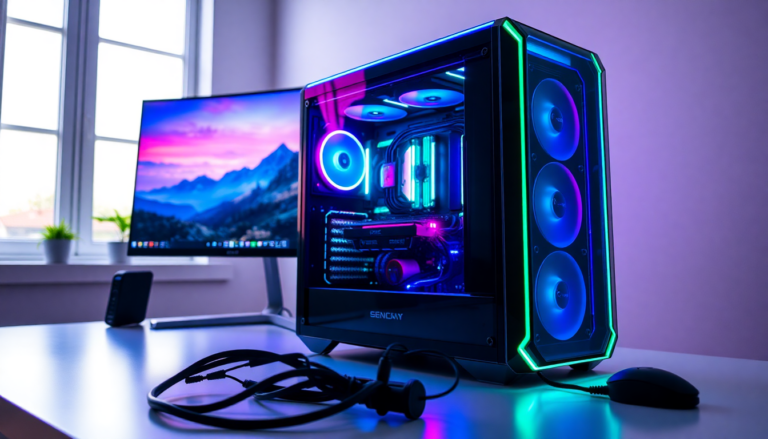Argomenti trattati
There’s a certain allure to RGB lighting that pulls you in, almost like a moth to a flame. As a recent convert to the world of RGB, I can’t help but reflect on my own initiation. Initially, it was all about aesthetics—who wouldn’t want their gaming rig to dazzle as they dive into the intense realms of CyberPunk 2077 or the enchanting landscapes of Oblivion Remastered? But, oh boy, did I underestimate the commitment it would demand from me.
The initial allure of RGB
When I first built my gaming rig, I was infatuated with the possibilities that RGB offered. I envisioned a beautifully lit setup that would not only serve as a nightlight to guide my coffee-seeking hands but also as a conversation starter for friends visiting my space. And you know what? It did exactly that! I remember the first time I flipped the switch on my RTX 4070; the vibrant hues illuminated the room in a way that felt like magic. My friends were mesmerized, and I was puffed with pride—“Oh, that old thing,” I’d casually remark, while inside, I was beaming with excitement.
The dark side of RGB
However, the honeymoon phase was short-lived. I soon found myself grappling with the chaos that RGB can bring. With various components from different manufacturers, each requiring its own software to manage lighting, my once harmonious setup turned into a circus of clashing colors and erratic patterns. The graphics card, power supply, and RGB strips just wouldn’t sync up! It’s like they were having their own little rebellion against me.
And then there’s the infamous issue of my RGB keyboard. Every time I rebooted, it reverted back to that annoying default ebb and flow effect. Can you imagine? There’s only so much flashing red light I can tolerate before I start seeing red in a completely different sense! I found myself frustrated, wondering how something meant to enhance my gaming experience could so easily become a source of annoyance.
Maintenance woes and performance pitfalls
As if the color chaos wasn’t enough, I began to notice some of the LED lighting strips malfunctioning—bulbs were going dark, and others refused to match the colors I painstakingly chose. It was becoming a full-time job just to keep things looking decent. Not to mention, I realized that these strips were intruding on vital airflow pathways in my case, potentially increasing the GPU temps beyond what’s acceptable. Now, that’s a gaming sin I couldn’t overlook.
It became clear: I had prioritized looks over functionality. Like a bowerbird entranced by shiny objects, I had let aesthetics cloud my judgment. I mean, who would want a beautiful rig if it means sacrificing performance? I vividly remember feeling the heat radiating from my GPU and thinking, “This isn’t just about looks anymore.” The realization hit me hard: I needed to change my approach.
The costly fix
Now, here’s the kicker—I’ve calculated that to achieve the minimalist aesthetic I now crave, I would need to invest around $700. Yep, you heard that right—seven hundred bucks to replace parts that are more about flair than function. It’s like I’m stuck in a never-ending cycle of RGB regret, weaving through a thicket of wires and lights that just won’t give me a moment’s peace.
Planning a new path
Looking ahead, I’m determined to avoid the RGB trap in my next build. I envision a setup that embraces muted tones—think deep blacks, earthy browns, and industrial silvers. No more flashy lights; instead, a clean, functional aesthetic that speaks to my inner tech enthusiast without the incessant upkeep. Who needs a light show when you can have a sleek, understated design? It’s time to step away from the RGB Kool-Aid.
As much as I’ve enjoyed the visual spectacle RGB can provide, I’ve learned that sometimes, less really is more. I want a rig that performs at its peak without the distraction of a neon circus. So, here’s to the future—one where I embrace simplicity and functionality over flashiness. After all, in the world of gaming, it’s the performance that truly matters.
Based in Australia, I’ve navigated the tumultuous waters of PC gaming hardware, and trust me when I say, the experience has been as illuminating as the RGB lights themselves—just with a tad more frustration and a lot more lessons learned.

